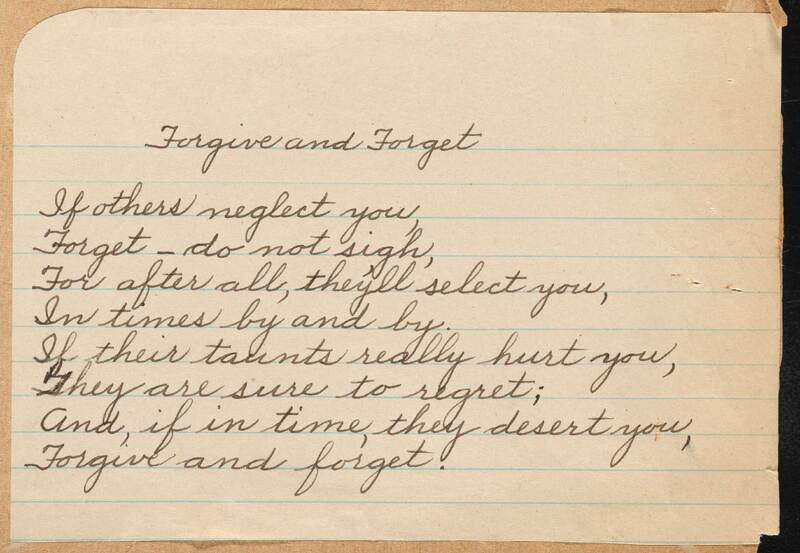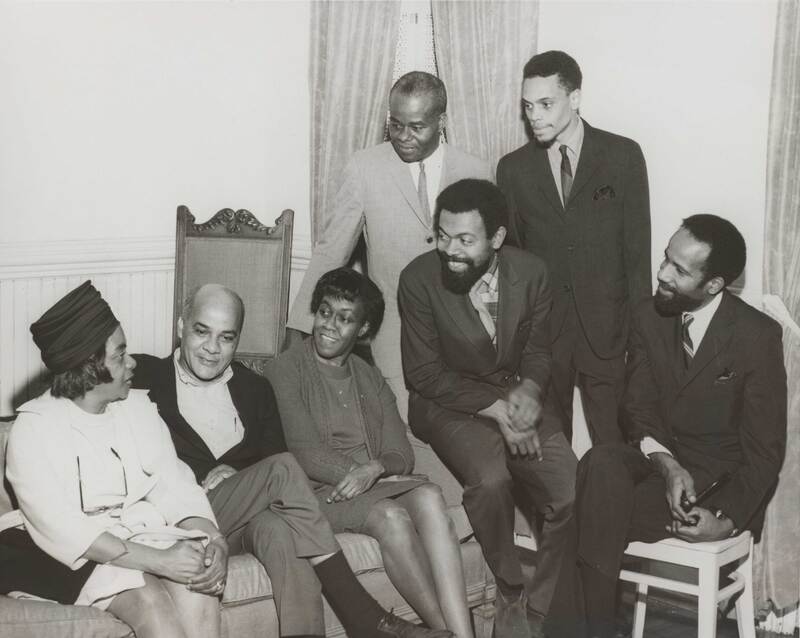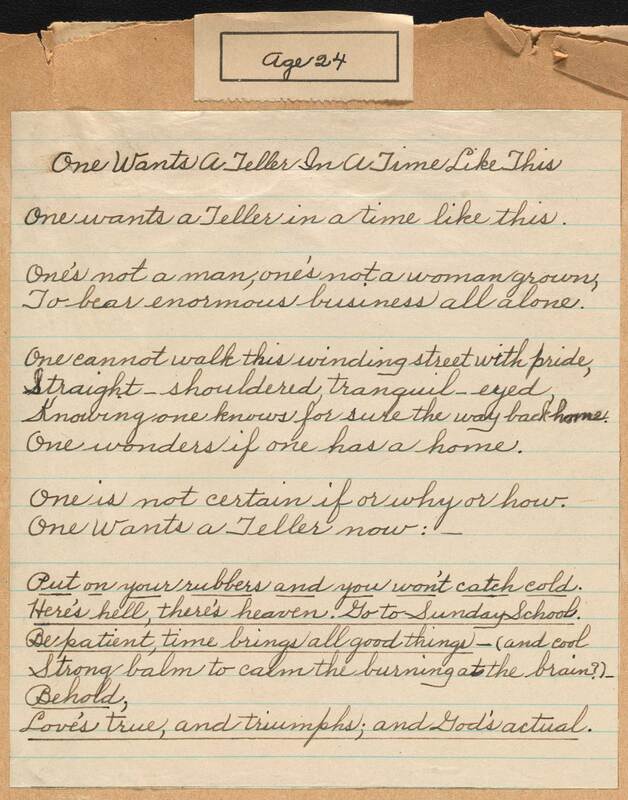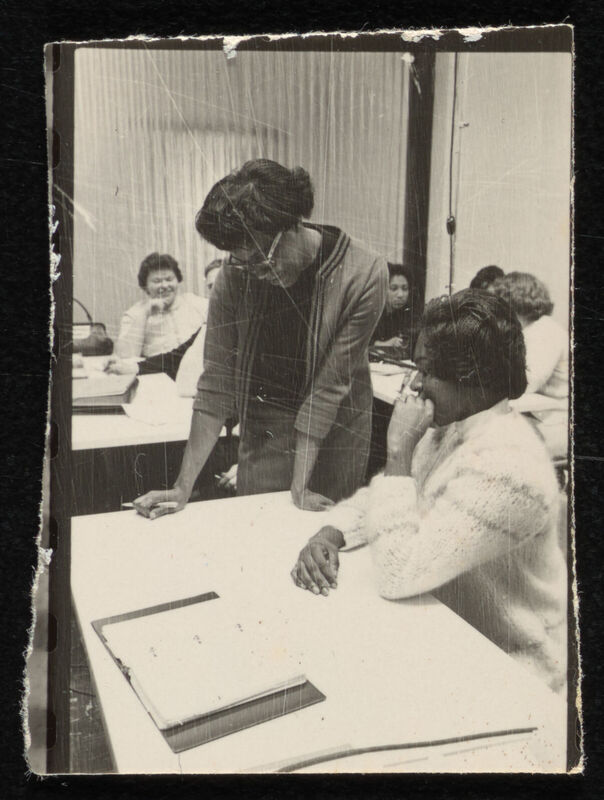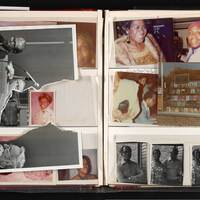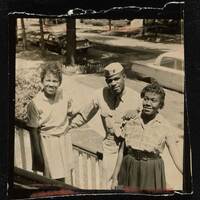- Exhibits
- Digitizing the Gwendolyn Brooks Papers
- Brooks at the Rare Book & Manuscript Library
Brooks at the Rare Book & Manuscript Library
Acquisition
U. of I. Library acquires archives of acclaimed writer Gwendolyn Brooks (Article written by Dusty Rhodes) October 17, 2013
In 2013, the Rare Book & Manuscript Library acquired Gwendolyn Brooks' Archive. The linked article discusses the process of acquiring these archives.
Rare Book & Manuscript Library Exhibition
Matter in the Margins: Gwendolyn Brooks at 100 (Curated by Anna Chen) September 20 — December 20, 2017
This exhibition showcased the literary archives of Gwendolyn E. Brooks (1917–2000), Illinois Poet Laureate and the first African American author to win the Pulitzer Prize. Brooks’ papers include youthful poetry and prose, scrapbooks of pieces she published as a young woman, extensive correspondence with a significant roster of other writers, and manuscript drafts and proofs, especially after she left mainstream commercial publishing to produce her works with black-owned presses.
Grand Awarded to the Library
Saving Her Words: Preserving the Gwendolyn Brooks Papers (2020-2022)
Funded by the Save America’s Treasures grant program through the National Park Service, this grant will ensure long-term access to the Gwendolyn Brooks Papers held within the Library’s Rare Books and Manuscript Library (RBML). The collection, which was compiled by Brooks herself as well as her daughter, Nora Brooks Blakely, was acquired by the RBML in 2013 as more than 500 boxes filled with manuscripts, drafts, revisions, correspondence, scrapbooks, clippings, recordings, broadsides, photographs, awards, artifacts, notebooks full of personal notes and lists, and several homemade chapbooks of handwritten early poetry. Since that time, the RBML has hired a manuscript curator whose primary responsibility has been to supervise the processing and rehousing of this expansive collection – work which is now nearing completion. The collection holds unrivaled content that illuminates Brook’s creative process, personality, and literary career. However much of the unpublished manuscript material – predominantly created between the years of 1960 and 2000 is heavily handled, on poor quality wood pulp paper which has been stored in less-than-ideal conditions before its acquisition. This combination has left much of the most valuable materials to researchers torn, dirty, covered in pressure-sensitive tape, moldy, and often too fragile for safe handling in its current state. Through this grant, we seek to conserve and selectively digitize these irreplaceable materials that document the career of, and reveal the woman who was one of the most influential poets of our modern era.
Planning in the Rare Book & Manuscript Library
Initial planning meetings were held July of 2021 to discuss digitization and metadata strategies for selected materials. The grant team discussed topics including descriptive metadata for the digital collection and conservation needs of materials. We also talked about working with Brooks’ people in Chicago to identify photographic content and hiring a graduate hourly student to work on metadata, supported with funds from the Charterjee account.
Initial emphasis was placed on the visual materials, starting with the photographic albums and scrapbooks. In August of 2021, Ana from the Rare Book & Manuscript Library started working on descriptive metadata for the Red Album, in which item-level descriptions were created for a total of 404 photos. The Red Album proved to be a baptism of fire; treated as a compound object for the purposes of publication in the digital library, it brought a spectrum of complexity that was not experienced before.
Although the album possesses the typical pages to place photos, it also contained various groupings of loose photographs pressed in between the pages. These groupings were denominated as inserts. To facilitate representation of the album, it was deemed necessary to create two views: one showing the pages' spreads (in album form), and the second view or record displaying the item-level images.
The process of creating descriptive metadata began with Ana creating a spreadsheet with the intention of inventorying the contents of the Red Album. The plan was to later convert it into the definite metadata spreadsheet. Ana’s documentation/data development approach was very similar to the one used for digital collections. She created a spreadsheet and divided the description of each page spread in individual sheets. The same methodology was applied to the inserts.
